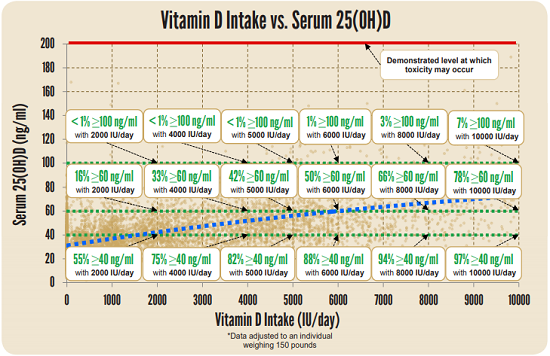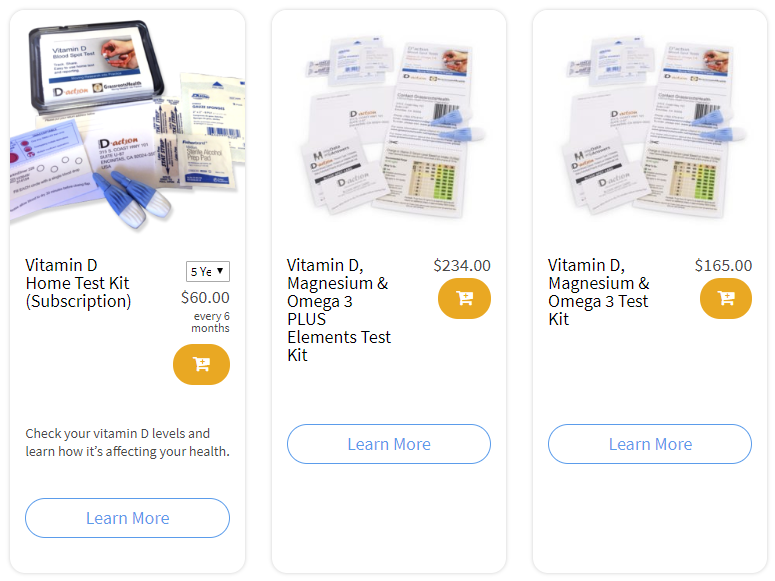Published on December 3, 2019
A recent vitamin D supplement review by Consumer Labs referenced the “safe upper tolerable intake” of 4,000 IU per day for vitamin D, set by the National Academy of Sciences (NAS, previously the IOM), and labeled supplements containing more as “very high dose” with a warning to reference the IOM limit.
Who sets the standards?
 The National Academy of Sciences (NAS) is a private, non-profit institution comprised of scholars in various scientific fields, most of whom donate their time. Its purpose is to provide independent, fact-based recommendations on scientific matters including science, engineering, and medicine. The Institute of Medicine (IOM) is the branch under NAS that is concerned with medical matters. In 2015 the name was changed from the Institute of Medicine to the National Academy of Medicine, but with regard to recommendations that were set before the change people still refer to the IOM.
The National Academy of Sciences (NAS) is a private, non-profit institution comprised of scholars in various scientific fields, most of whom donate their time. Its purpose is to provide independent, fact-based recommendations on scientific matters including science, engineering, and medicine. The Institute of Medicine (IOM) is the branch under NAS that is concerned with medical matters. In 2015 the name was changed from the Institute of Medicine to the National Academy of Medicine, but with regard to recommendations that were set before the change people still refer to the IOM.
In November 2010, the IOM issued an updated recommended dietary allowance (RDA) and tolerable upper limit (UL) for vitamin D with recommendations varying by age.
| Age | RDA | UL |
| 0-6 months | 400 IU | 1,000 IU |
| 0-12 months | 400 IU | 1,500 IU |
| 1-3 years | 600 IU | 2,500 IU |
| 4-8 years | 600 IU | 3,000 IU |
| 9-13 years | 600 IU | 4,000 IU |
| 14-18 years | 600 IU | 4,000 IU |
| 19-50 years | 600 IU | 4,000 IU |
| 51-70 years | 600 IU | 4,000 IU |
| >70 years | 800 IU | 4,000 IU |
Source: Vitamin D Fact Sheet for Health Professionals
The RDA is set at a level determined to be sufficient for 97.5% of the population meet or exceed the specific nutrient requirement. For vitamin D, the panel concluded that 20 ng/ml (50 nmol/L) was the correct goal for vitamin D blood levels (25(OH)D) to maintain bone health and the RDA was set to allow 97.5% of the population to get to that level.
What does the vitamin D scientific community think?
Several vitamin D researchers disagreed with the new recommendations based on two main points: 1) That 20 ng/ml is not enough for bone health, the goal for that should be 30 ng/ml (75 nmol/L) and 2) That even if the goal is 20 ng/ml, the RDAs set will not meet that goal for 97.5% of the population – the math was not done correctly. Immediately after the new recommendations were issued, there were the following key publications:
The Vitamin D-lemma – Written by Amy Maxman for Nature, a well-researched news article on the new RDA and the scientific community’s reaction to the new recommendations.
Endocrine Society Guidelines – Michael Holick led a team of vitamin D researchers to publish standards for the Endocrine Society. They were similar to the IOM’s, but with a higher upper limit for adults of 10,000 IU/day.
A Statistical Error in the Estimation of the Recommended Daily Allowance for Vitamin D – The first research paper on the subject, written by Paul Veugelers and John Ekwaru and published October 2014 in Nutrients and explained in this blog.
Canadian and US Petition – Pure North, a non-profit organization in Canada committed to delivering wellness programs, started a petition right away.
GrassrootsHealth published Analysis – This analysis, led by Robert Heaney, used D*action data and found, similar to Veugelers and Ekwaru, that the RDA was off by an order of magnitude. Described in detail in this blog.
Comment from the Harvard School of Public Health – by Heike Bischoff-Ferrarri and Walter Willett.
Heaney Interview with Dr. Mercola – Read the recap or watch a 20-minute interview on this topic with Dr. Robert Heaney.
Responses from some of our scientist panel
Could 5,000 IU Vitamin D per Day be Toxic?
Several previous GrassrootsHealth posts have addressed the topic of how much is too much for vitamin D, including a review of a study by Kimball et al., a response to address the concern for kidney stones and kidney diseases with high vitamin D intake, and an overview of when to be concerned about vitamin D toxicity.
Vitamin D Toxicity is Difficult to Achieve
The chart below shows a plot of the vitamin D serum levels as a function of reported vitamin D intake from the GrassrootsHealth cohort, adjusted to an individual weighing 150 pounds. The dotted blue line is the best fit line through the data.
Shown on the figure are the percent of participants who are at or above 40, 60, and 100 ng/ml for various vitamin D supplement intake amounts. Fewer than 1% of participants have vitamin D levels ≥100 ng/ml resulting from an intake of 6000 IU/day or less, and no participants reached a level above 200 ng/ml, which is the demonstrated level at which toxicity may occur, as illustrated by the red line at the top of the chart.
In conclusion, it is important to remember that the appropriate measure for the vitamin D requirement is not intake, but achieved serum level. The requirement that the recommendations for any nutrient must be based on intake does not incorporate research now available showing the wide variation in response to intake, and misses the key point of achieving the appropriate measure to help people be healthy and prevent disease.
Vitamin D recommendations in a nutshell
| Institute of Medicine | Endocrine Society | GrassrootsHealth | |
| RDA | 600 IU/day | 1500-2000 IU/day | n/a – test to see |
| Blood level recommendations | >20 ng/ml | >30 ng/ml | 40-60 ng/ml |
| Tolerable upper limit | 4000 IU/day | 10,000 IU/day | n/a |
Are you getting enough vitamin D?
Make sure you know your vitamin D level, and take steps to keep it within a target of 40-60 ng/ml or 100-150 nmol/L! Through GrassrootsHealth Nutrient Research Institute, you can also test your essential elements magnesium, copper, zinc and selenium, toxins such as lead, mercury and cadmium, as well as your omega-3 levels, inflammation levels and thyroid stimulating hormone (TSH) level. Find out your levels today! Log on to the shop (click the link below) to get your tests and see for yourself if your level can be improved.
Make sure you track your results before and after, about every 6 months!
How can I track my nutrient intake and levels over time?
To help you track your supplement use and nutrient levels, GrassrootsHealth has created an online tracking system called myData-myAnswers. For each specific supplement, you can track what days you take it, how much, and many other details. This will help you know your true supplemental intake and what patterns of use work for you to reach and maintain optimum nutrient levels. Check it out today!








